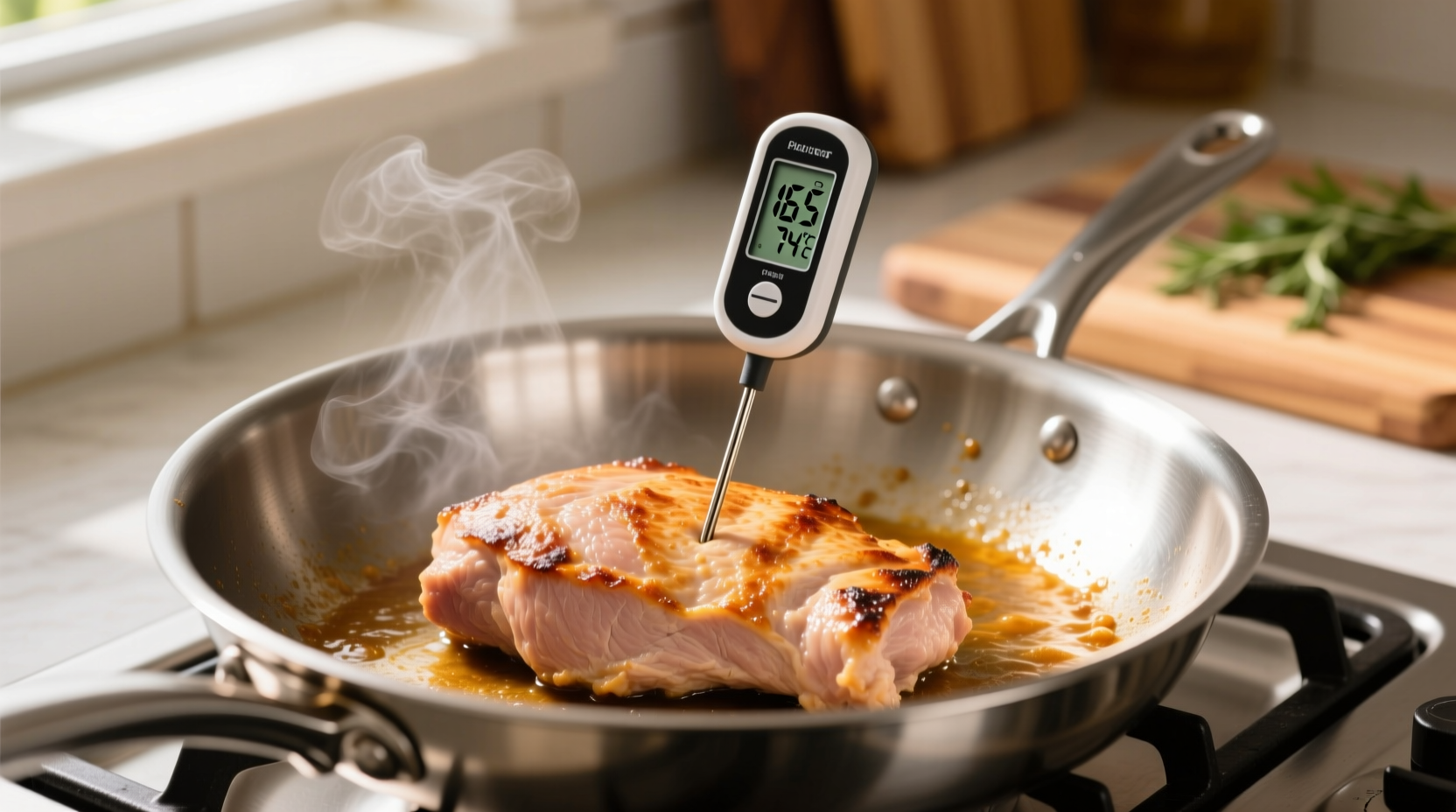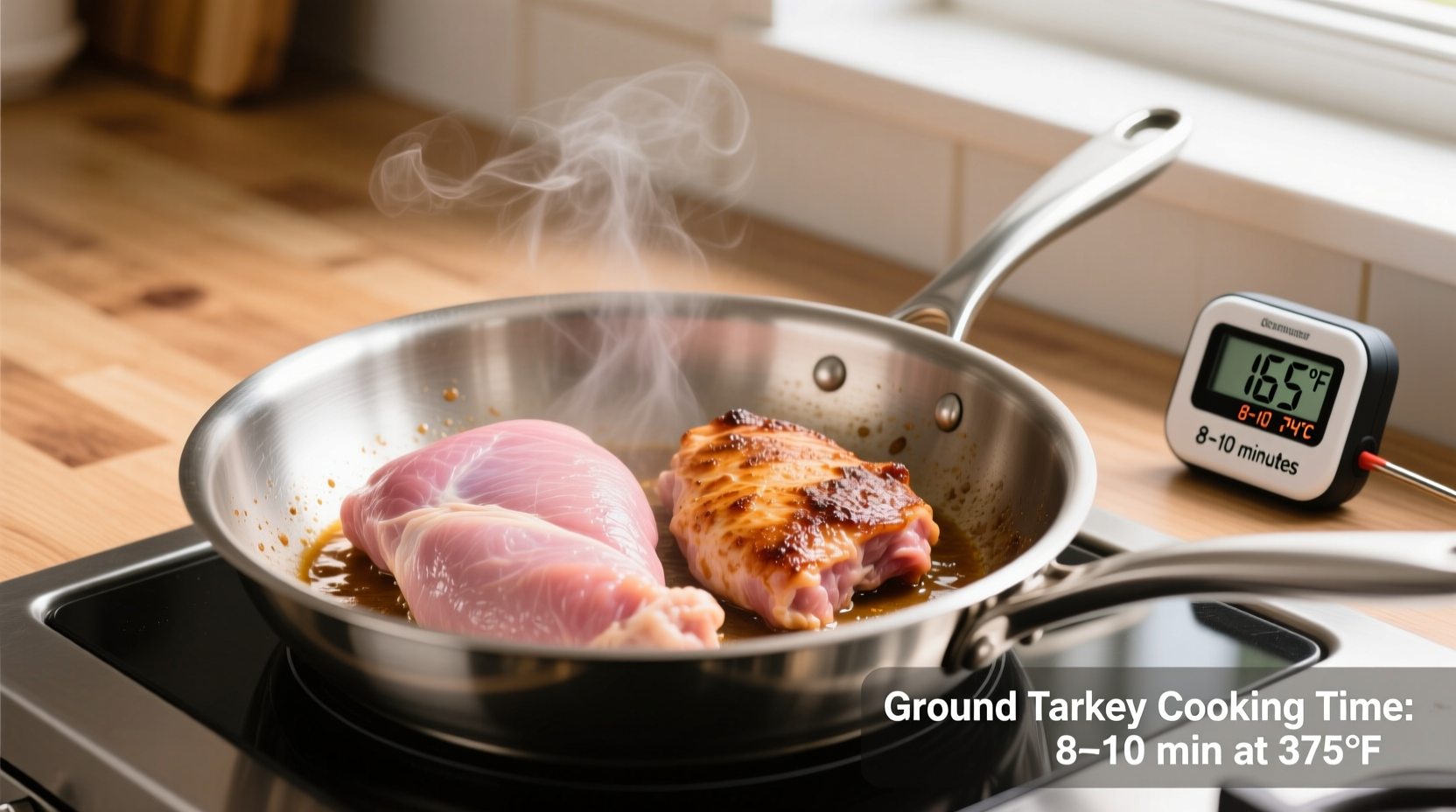Ground turkey typically takes 8-12 minutes to cook thoroughly on the stovetop, but the only reliable way to ensure safety is by checking that it reaches an internal temperature of 165°F (73.8°C) using a meat thermometer. Unlike beef, color alone isn't a trustworthy indicator of doneness for ground poultry.
When you're standing at the stove with raw ground turkey in your pan, knowing exactly how long to cook it makes all the difference between a safe, flavorful meal and potential foodborne illness. This comprehensive guide delivers precise cooking times, temperature verification methods, and professional techniques that guarantee perfect results every time—without guesswork.
Why Cooking Time Alone Isn't Enough
Many home cooks make the critical mistake of relying solely on cooking time to determine when ground turkey is done. The USDA Food Safety and Inspection Service emphasizes that color is not a reliable indicator for poultry doneness. Ground turkey can appear browned before reaching a safe temperature, or remain pinkish even when fully cooked.
| Cooking Method | Approximate Time | Required Internal Temperature |
|---|---|---|
| Stovetop (medium heat) | 8-12 minutes | 165°F (73.8°C) |
| Oven (baked) | 20-25 minutes | 165°F (73.8°C) |
| Air Fryer | 10-15 minutes | 165°F (73.8°C) |
This fact-based comparison from the USDA Food Safety and Inspection Service shows why time varies by cooking method while the critical safety temperature remains constant.
Step-by-Step Cooking Process
Before You Start: Essential Preparation
Remove ground turkey from refrigeration 15-20 minutes before cooking to allow it to come closer to room temperature. This promotes even cooking. Have your meat thermometer ready—digital instant-read thermometers provide the most accurate results in 3-5 seconds.
Cooking on the Stovetop (Most Common Method)
- Heat a skillet over medium heat (not high) for 2 minutes
- Add 1 teaspoon of oil to prevent sticking
- Add ground turkey, breaking it into even chunks with a spatula
- Cook undisturbed for 2 minutes to develop fond (flavorful browned bits)
- Stir and continue cooking, breaking up larger pieces
- Check temperature in multiple spots after 8 minutes
- Remove from heat immediately when thermometer reads 165°F

Factors That Change Cooking Time
Your specific cooking time depends on several variables that affect heat transfer:
- Pan material: Cast iron retains heat better than stainless steel, potentially reducing cooking time by 1-2 minutes
- Meat fat content: Lean 99% fat-free turkey cooks faster than 85% lean varieties
- Starting temperature: Frozen turkey requires 50% more cooking time than refrigerated
- Batch size: Cooking more than 1 pound at once increases time by 3-5 minutes
These context boundaries explain why "8-12 minutes" is just a starting point. The Centers for Disease Control and Prevention specifically warns that variables like these make visual indicators unreliable for poultry safety.
Avoid These Common Mistakes
Overcrowding the Pan
When you add too much turkey at once, the pan temperature drops dramatically, causing the meat to steam rather than sear. This extends cooking time and creates uneven results. Cook in batches if preparing large quantities.
Stirring Too Frequently
Constant stirring prevents proper browning. Allow the meat to sit undisturbed for 1-2 minutes at a time to develop those flavorful Maillard reaction compounds that enhance taste.
Guessing Doneness by Color
A 2022 Food Control journal study confirmed that ground turkey can appear fully cooked (brown throughout) at temperatures as low as 140°F—dangerously below the safe threshold. Always verify with a thermometer.
Storage and Reheating Guidelines
Properly cooked ground turkey can be refrigerated for 3-4 days or frozen for 3-4 months. When reheating leftovers:
- Thaw frozen portions in the refrigerator overnight
- Reheat to 165°F internal temperature
- Use within 2 hours of reheating
The FDA Food Code specifies that cooked poultry should not remain in the temperature danger zone (40°F-140°F) for more than 2 hours to prevent bacterial growth.
Professional Tips for Better Results
Season ground turkey with salt before cooking to help retain moisture. Add acidic ingredients like tomatoes or vinegar during the last 2 minutes of cooking to prevent toughness. For burgers or meatloaf, mix in 1-2 tablespoons of olive oil per pound to compensate for the lean nature of turkey.
Frequently Asked Questions
How can I tell if ground turkey is cooked without a thermometer?
Without a thermometer, check for clear juices when pressing the meat with a spoon. The texture should be firm with no pink areas, though color alone isn't reliable. For safety, always use a thermometer as recommended by food safety authorities.
Why does ground turkey take longer to cook than ground beef?
Ground turkey requires higher internal temperature (165°F vs 145°F for beef) due to salmonella risk. Its leaner composition also means less fat to conduct heat, potentially extending cooking time by 2-3 minutes compared to similar amounts of ground beef.
Can ground turkey be slightly pink and still be safe to eat?
Yes, ground turkey can remain slightly pink even when properly cooked to 165°F. This occurs due to myoglobin reaction with oven gases or certain ingredients like tomatoes. Temperature, not color, determines safety according to USDA guidelines.
What's the minimum internal temperature for ground turkey?
The minimum safe internal temperature for ground turkey is 165°F (73.8°C) as established by the USDA Food Safety and Inspection Service. This temperature destroys harmful bacteria including salmonella and campylobacter that may be present in raw poultry.
How long should ground turkey rest after cooking?
Ground turkey requires minimal resting time—just 2-3 minutes off heat allows juices to redistribute. Unlike larger cuts of meat, ground poultry doesn't benefit from extended resting periods as the small particle size prevents significant juice loss.











 浙公网安备
33010002000092号
浙公网安备
33010002000092号 浙B2-20120091-4
浙B2-20120091-4